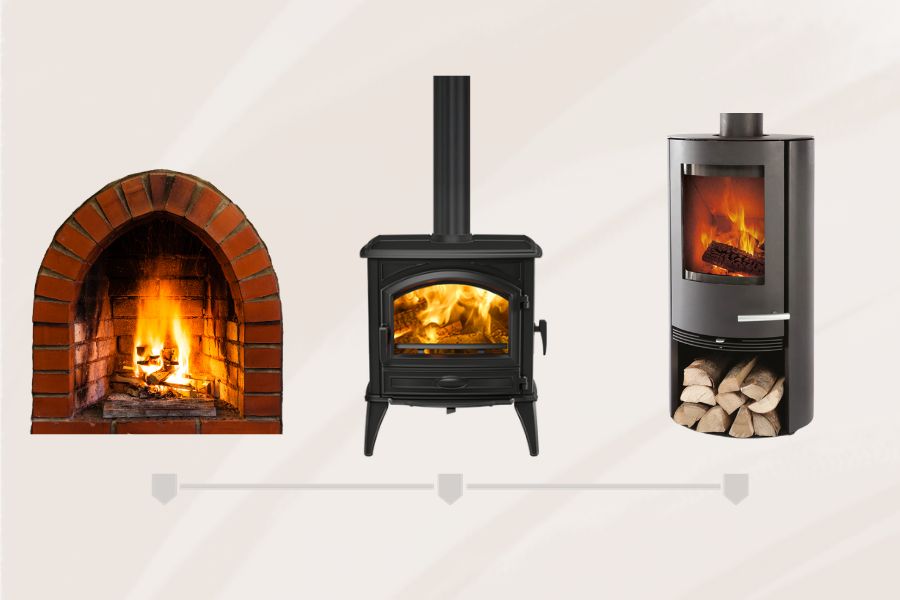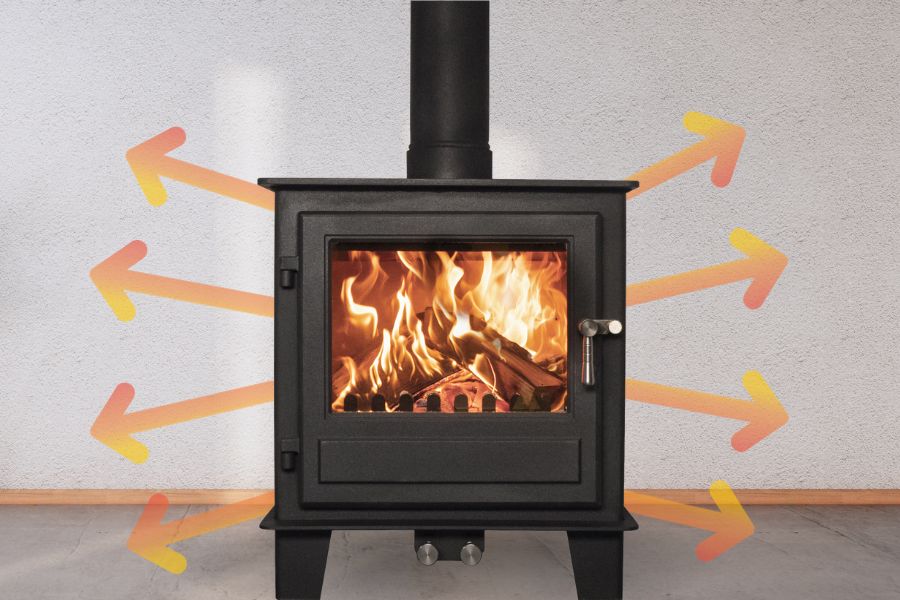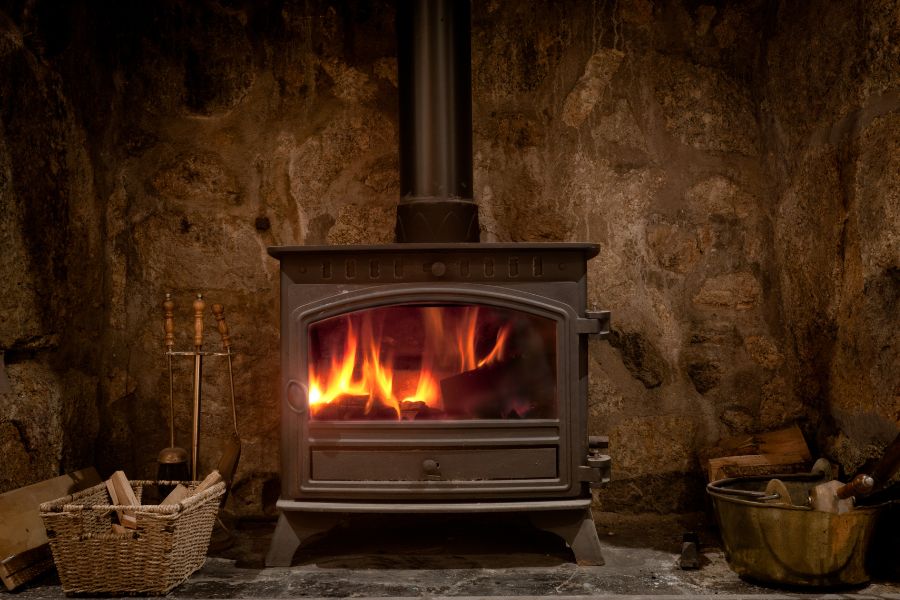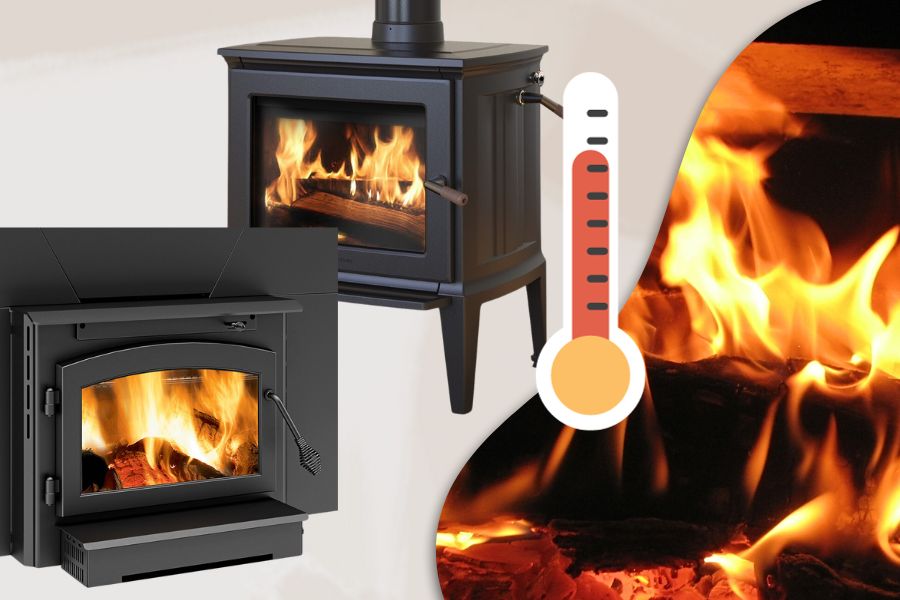Ready to feel the heat? Let’s journey into the world of wood stoves! These warm buddies can get hot, really hot! But how hot does a good wood stove get? Well, many things factor in.
The kind of wood you burn, whether your draft is open, and even the type of stove pipe you use can impact the heat.
Whether you use a cast-iron wood burning stove or a modern fireplace insert, if installed correctly, these stoves can keep your house warm all winter. But be careful – too hot can lead to chimney fires! Let’s dive in to find out more!
Discovering the Power of the Wood Stove
Stoves are powerful. Wood stoves are even more so. They burn hot. They burn wood, giving out lots of heat—more heat than an open fire. Wood stoves have evolved. Today’s stoves are much better than old ones.
The Evolution from Open Fireplaces to Modern Wood Stoves

Once, people used open fires. Then, they discovered wood-burning stoves—a big step up. Wood-burning stoves gave more heat. Most heat for your wood. That’s good. They can reach high temperatures—very high temperatures.
Stove pipes made a big difference, too. They helped carry the smoke away. Smoke from the burning woods. They also kept the heat in. The hotter the stove, the better the burn. The burn was longer, too. Longer burns mean less fuel. That’s smart.
But there’s more. Modern wood stoves got even better. Today’s stoves are safe. Safer for houses and safer for small children. How? They have better flues. Better flues mean less creosote buildup. Less creosote means less chimney fire.
The wood stove also uses dry wood. Dry wood burns better. It gives more heat. Dry wood also makes less creosote.
So, wood stoves got better. They became safer, hotter, and smarter. They’re an excellent choice for heating. So, let’s respect the power of the wood stove.
The Heat Output: How Hot Does a Wood Stove Get?
Wood stoves get hot. Very hot. A wood burning stove can heat your house in winter. It uses wood. Burns it. The fire gets hot. The wood-burning stove gets hot.
But how hot does it get? It depends. Depends on the wood. Or, it depends on the wood-burning stove. It depends on the air. More air, hotter burn. But remember, too hot can cause a chimney fire.
Decoding High Temperatures: Stove Pipes and Radiant Heat

Stove pipes are essential. They help control the temperature. They let out smoke from the wood-burning stove. But they keep in the heat. This heat is radiant. It warms up your house. It can reach a high temperature.
But it must be controlled. Controlled with the flue. A good flue helps control temperature and prevents chimney fires. The stove pipe and radiant heat work together. They keep the temperature of your house warm.
The Fuel Behind the Flame: Understanding Wood Burning
Wood burning is an art. An art and a science. You need the right wood burner and fuel. Wood is the fuel for wood burners. But not all wood is suitable for a wood burner. You need dry wood. Dry wood burns better. It gives the wood burner the most heat.
The Role of Dry Wood, Oxygen, and Combustion Zone in Burning Wood
Dry wood, oxygen, and the combustion zone. These are the keys to good wood burning. Dry wood burns longer.
It gives more heat. More heat from the same amount of wood. That’s good. Oxygen helps the wood burn. More oxygen, hotter fire. But too much oxygen? That can be dangerous.
The combustion zone is where the fire burns. It’s in the wood stove. It must be hot. Very hot. This makes the wood burn better. It gives more heat.
Wood-burning stoves are amazing. They give a lot of heat. They keep our houses warm. But they must be used right. They must be respected. They can get very hot. But we control how hot they get. We control the heat and the fire. Ultimately, we control the wood stove.
Safety and Environmental Aspects of Wood Burning Stove
Wood-burning stoves are great. They give us heat. Lots of heat. But they need to be safe. A wood stove can reach a high temperature.
That’s good for heating. But it can be dangerous, too. We need to be careful. We need to keep our stoves safe.
Creosote Buildup, Carbon Dioxide, and Environmental Protection Agency Guidelines
Creosote can build up in your stove pipe. It’s from burning wood. It can cause a fire. That’s dangerous. You can stop it. Burn dry wood. Burn it at the right temperature. This will make less creosote.
Carbon Dioxide is a gas. It’s from burning wood. It can be harmful. But a good wood stove can reduce it. It can burn the wood completely. This makes less Carbon.
The Environmental Protection Agency has guidelines. They help us use wood burning stoves safely. Further, they tell us how to burn wood. They tell us how to use our stoves. We should follow them.
Maintaining the Warmth: Best Practices for Wood Stove Use

A wood stove can keep us warm. But we need to use it right. We need to keep it burning. We need to keep it safe.
Tips for More Heat, Less Ash, and a Safe Home
Here are some tips. Use dry wood. It burns better. It gives more heat. Keep your fire hot. It will burn the wood completely. This will provide more heat. It will make less ash. Ash can block the flue. This can cause problems.
Check your stove pipe regularly. Make sure it’s clean. Creosote can build up. It can cause a fire.
Keep the area around your wood-burning stove very clear. Wood stove reaches a high temperature. They can cause fires.
Use the right wood. Some woods burn longer. They give more heat.
Keep children away from the stove. It gets hot.
Wood-burning stoves can be safe. They can be efficient. They can keep us warm. But we need to use them right. We need to respect them. And control the heat and the fire. We control the wood stove.
Conclusion: Harnessing the Power of the Wood Stove
Wood stoves are powerhouses. They’re wood burners that reach high temperatures. They bring the most heat to our homes. They make it cozy.
But remember, they’re firekeepers. They demand care. Burn responsibly. Keep the right temperature. Then, enjoy your wood burning stove’s warmth. That’s the real power of the wood stove. We control the heat; we control the fire. It’s all in our hands.






